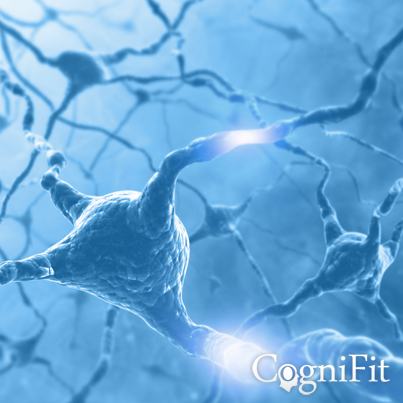Seven weeks ago, David W., age 18, had a car accident. In the accident David's skull violently hit the steering wheel. During the blow, his brain collided with the skull which is made of very hard and resistant bone. David lost consciousness for 2 to 3 minutes. Later examinations revealed that his skull had not been fractured. Fortunately, no bleeding, swelling, or blood clots were observed in or around the brain. Thus a disturbance of the oxygen supply to the brain was avoided along with more extensive brain damage. For seven weeks now David has experienced headaches as well as significant concentration problems. At rare times his vision is blurred. David is often sleepy.

Traumatic Brain Injury
Case description
Get access to our online platform to work cognitive abilities.
Assess cognitive level through our General Cognitive Assessment.
Personalized training programs for each user. Give it a try!
These are a few of the symptoms which characterize what is called mild traumatic brain injury. Other symptoms may include confusion, dizziness, inability to sustain sound and light, mood changes, fatigue, memory or concentration problems. In cases of severe traumatic brain injury symptoms are similar but more intense. Loss of consciousness, if experienced, may continue for hours, days or unlimited periods of time. If affected, speech may become incoherent or blurred. Other symptoms of severe traumatic brain injury may include uncharacteristic behavior and agitation, recurrent vomiting, pupils' dilatation, feebleness or numbness in lower limbs and poor control of bladder or bowel. Complications may occur which are associated with a wide range of symptoms such as cognitive dysfunction, communication disability, seizures, facial nerve damage, infections as well as with emotional and behavioral problems.
These symptoms, few or many, mild or severe, are the result of the damage incurred to the brain. They occur because the blow or jolt to the brain has occasioned temporary cell damage, and, in more severe cases, bruising, internal bleeding, neuronal death and/or loss of tissue. Brain injuries and their associated symptoms differ from each other. Damage can vary from light to heavy and can occur in any part of the brain. Blows and jolts to the brain are for the most part unexpected and arise from a violent experience such as car accidents, falls, sports and combat. To determine degree of severity doctors collect information about the circumstances of the injury and use state of consciousness as measured by the Glascow Coma Scale. The scale classifies into mild, moderate and severe cases. In mild cases there is concussion but neurological recuperation is complete. Most mild patients experience memory and concentration difficulties. In moderate cases, the patient is lethargic and in severe cases, in a state of coma, incapable of following directions and opening his eyes. Infants who have received a head blow or jolt must always be referred to a physician as they are unable to communicate their symptoms.
Rest is the only treatment for the brain injury itself. However, special care and medication might be indicated to confine the secondary damage (excess fluid, reduced blood oxygenation, seizure and others) occasioned to the brain, especially in the more severe cases. People most at risk for traumatic brain injury are the very young, birth till 4 years old, older adolescents and the aged, 65 years and over.
Over one and a half million people experience traumatic brain injuries each year. Among those, 800 000 require early outpatient care and 270 000 are hospitalized. Each year about 52 000 deaths and 80 000 permanent severe neurological disabilities result from severe traumatic brain injury.
In the absence of treatment for traumatic brain injury, the best course of action is prevention. Creating safer surroundings for infants and older adults and educating adolescents for a safer conduct are essential. Careful thought must be given to safe and steady baby holding (with no shaking), the use of seat belts, helmets, the storage of firearms and bullets, the influence of alcohol, the installation of hand rails and non-slip mats, and of stair barriers for young children.
Rehabilitation is often needed, especially in the case of significant brain injury. The rehabilitation team may include doctors and/or nurses in neuropsychology, rehabilitative medicine, speech and language, occupational therapy, psychiatry, social work and recreation. Extensive research shows that cognitive training (or brain training) is important for the rehabilitation of cognitive function impaired by traumatic brain injury. When cognitive damage is diffuse (inflicted to widespread areas in the brain), multi-domain brain training programs, that train a wide range of cognitive functions, are indicated.
The consequences of an acquired brain injury may be more or less severe, and can affect cognition level which affects this impairment. Language, memory, perception, as well as other cognitive abilities may be affected after a head injury.
References
James Siberski, Evelyn Shatil, Carol Siberski, Margie Eckroth-Bucher, Aubrey French, Sara Horton, Rachel F. Loefflad, Phillip Rouse. Computer-Based Cognitive Training for Individuals With Intellectual and Developmental Disabilities: Pilot Study - The American Journal of Alzheimer’s Disease & Other Dementias 2014; doi: 10.1177/1533317514539376
Peretz C, Korczyn AD, Shatil E, Aharonson V, Birnboim S, Giladi N. - Computer-Based, Personalized Cognitive Training versus Classical Computer Games: A Randomized Double-Blind Prospective Trial of Cognitive Stimulation - Neuroepidemiology 2011; 36:91-9.
Evelyn Shatil, Jaroslava Mikulecká, Francesco Bellotti, Vladimír Burěs - Novel Television-Based Cognitive Training Improves Working Memory and Executive Function - PLOS ONE July 03, 2014. 10.1371/journal.pone.0101472
Shatil E, Korczyn AD, Peretz C, et al. - Improving cognitive performance in elderly subjects using computerized cognitive training - Alzheimer's & Dementia: The Journal of the Alzheimer's Association 2008; 4(4):T492.
Muñoz-Céspedes, J. M., Tirapu-Ustarroz J. (2001). Neuropsychological rehabilitation. Madrid: Synthesis
Trexler LE. Empirical support for neuropsychological rehabilitation. En: Christensen AL y Uzzell B, eds. International handbook of neuropsychological rehabilitation. New York: Kluwer Academic/ Plenum Publishers; 2000. p. 137-50.
Rohling, M. L., Faust, M. E., Beverly, B., & Demakis, G. (2009). Effectiveness of cognitive rehabilitation following acquired brain injury: a meta-analytic re-examination of Cicerone et al.'s (2000, 2005) systematic reviews. Neuropsychology, 23(1), 20.


